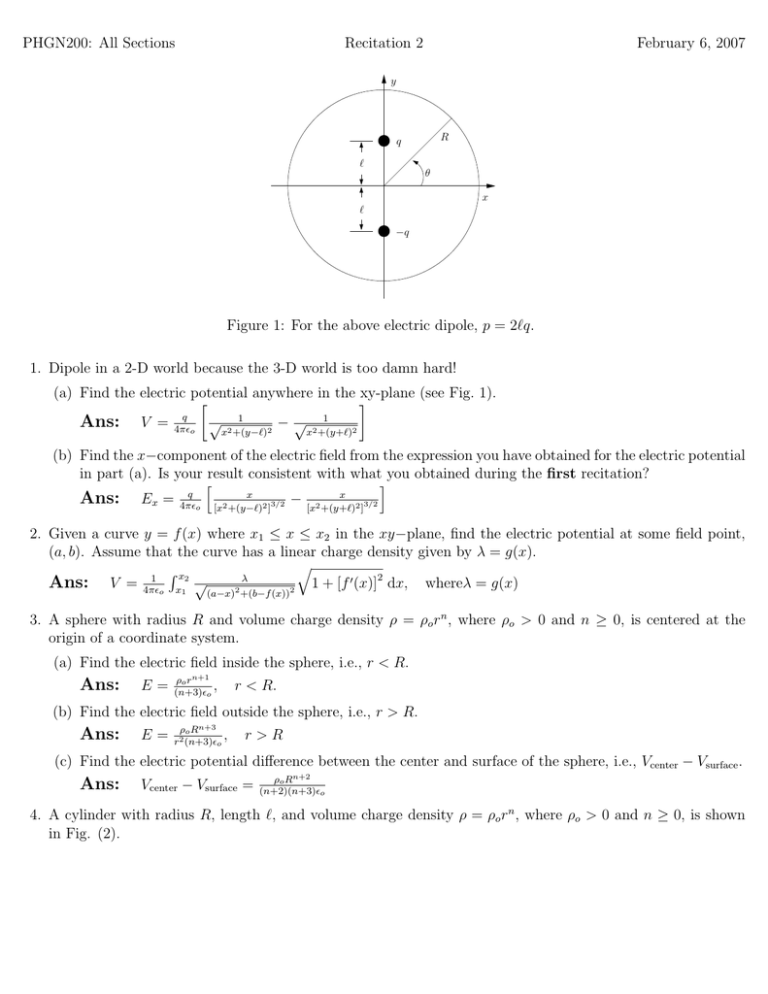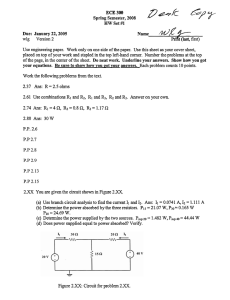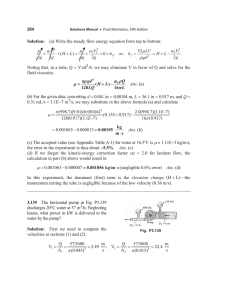PHGN200: All Sections Recitation 2 February 6, 2007
advertisement

PHGN200: All Sections Recitation 2 February 6, 2007 y R q ` θ x ` −q Figure 1: For the above electric dipole, p = 2`q. 1. Dipole in a 2-D world because the 3-D world is too damn hard! (a) Find the electric potential anywhere in the xy-plane (see Fig. 1). q Ans: V = 4πo √ 2 1 2 − √ 2 1 2 x +(y−`) x +(y+`) (b) Find the x−component of the electric field from the expression you have obtained for the electric potential in part (a). Is your result consistent with what you obtained during the first recitation? h i x x − Ans: Ex = 4πq o [x2 +(y−`) 3/2 3/2 2] [x2 +(y+`)2 ] 2. Given a curve y = f (x) where x1 ≤ x ≤ x2 in the xy−plane, find the electric potential at some field point, (a, b). Assume that the curve has a linear charge density given by λ = g(x). q R x2 λ 1 √ Ans: V = 4πo x1 1 + [f 0 (x)]2 dx, whereλ = g(x) 2 2 (a−x) +(b−f (x)) 3. A sphere with radius R and volume charge density ρ = ρo rn , where ρo > 0 and n ≥ 0, is centered at the origin of a coordinate system. (a) Find the electric field inside the sphere, i.e., r < R. Ans: E= ρo rn+1 , (n+3)o r < R. (b) Find the electric field outside the sphere, i.e., r > R. Ans: E= ρo Rn+3 , r2 (n+3)o r>R (c) Find the electric potential difference between the center and surface of the sphere, i.e., Vcenter − Vsurface . Ans: Vcenter − Vsurface = ρo Rn+2 (n+2)(n+3)o 4. A cylinder with radius R, length `, and volume charge density ρ = ρo rn , where ρo > 0 and n ≥ 0, is shown in Fig. (2). PHGN200: All Sections Recitation 2 February 6, 2007 z ℓ z θ R y x Figure 2: A cylinder with radius R, and length `, where R ` 1. The figure is not to scale. (a) Find the electric field inside the cylinder, i.e., r < R. Ans: E= ρo rn+1 , (n+2)o r<R (b) Find the electric field outside the cylinder, i.e., r > R. Ans: E= ρo Rn+2 , (n+2)ro r>R (c) Find the electric potential difference between the center and the surface of the cylinder, i.e., Vcenter − Vsurface . ρo Rn+2 Ans: Vcenter − Vsurface = (n+2) 2 o Page 2





